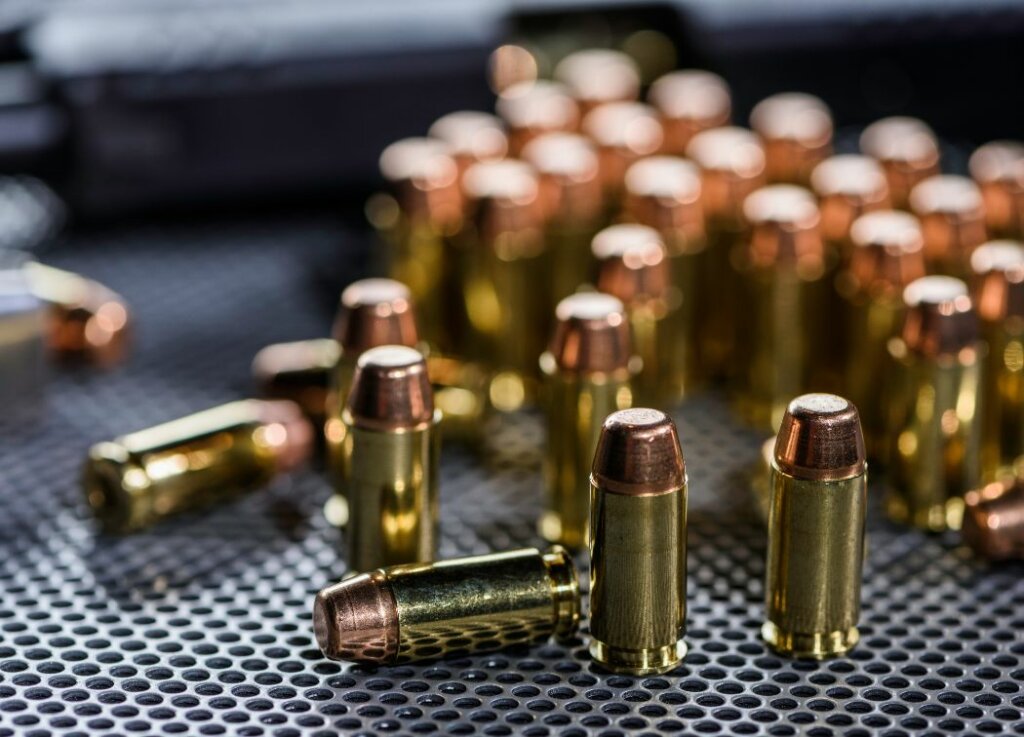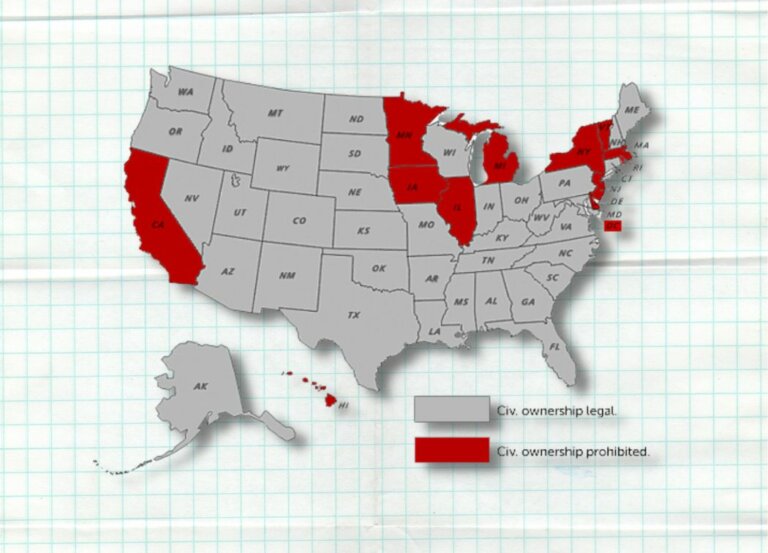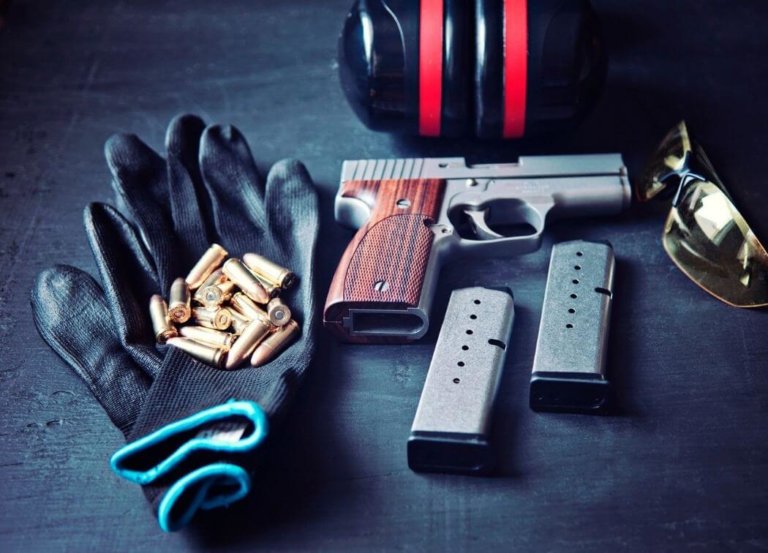What is Vacuum Sealing Ammo [The Ultimate Guide]
It’s always a good idea to vacuum seal ammunition. It protects your ammunition from the weather and keeps it from rusting and corroding. Due to its preservation properties, vacuum sealing maintains ammunition and weapons in the best possible condition for considerably lengthy periods of time.
Continue reading to learn why you should vacuum seal your ammo, as well as how to maintain and store it.

- Should You Vacuum-Seal Your Ammunition?
- Why Not Store Your Ammunition In A Cardboard Box?
- Vacuum Sealing Ammunition For Long-Term Storage
- The Benefits Of Vacuum Sealing Your Ammunition
- Before Vacuum Sealing Ensure You Know Your Ammo Container Size
- How To Vacuum Seal Your Ammunition
- Make Sure Your Ammunition Is Sealed Properly
- How Can One Tell If Your Vacuum-Sealed Ammo Has Expired?
- What Are the Disadvantages Of Vacuum Sealing Your Ammunition?
- What Is the Life Expectancy Of Vacuum-Sealed Ammunition?
- How To Store Vacuum Sealed Ammunition
- How Should Vacuum-Sealed Ammunition Be Maintained?
- What Other Forms of Ammunition Can be Vacuum Sealed?
- Is It Possible to Vacuum Seal Your Guns and Weapons?
- What is a Vacuum-Sealed Ammunition Can?
- How To Dispose of Vacuum-Sealed Ammunition
Should You Vacuum-Seal Your Ammunition?
Ammunition that has been vacuum-sealed is effective after long-term storage. Notably, the container’s lack of air, moisture, and oxygen inhibits your ammunition from condensing and oxidizing.
Your ammo should survive longer than if you stored it in a non-airtight container since there is no room for germs to thrive. When vacuum sealed, ammunition like rimfire, centerfire, shotshell, and handgun can be kept for up to ten years.
Condensation Damage Can Be Avoided
Condensation builds inside the container and on the ammo when it comes into contact with dampness. Moisture can be corrosive, causing your ammunition to be damaged or affecting its location within the container.
Damage from Oxidization Can be Avoided
While oxidation does not affect firing, it does rust and corrodes metals when they come into touch with it. Each piece of ammunition that has been exposed to air is more likely to have a damaged coating or have oxidized within the casing, making it less dependable than new ammo.
Why Not Store Your Ammunition In A Cardboard Box?
You may have observed that some folks keep their ammunition in cardboard boxes rather than zip lock containers. This is never a good idea since cardboard absorbs moisture and generates extra heat between the objects within, especially if they’re stacked on top of each other.
Vacuum Sealing Ammunition For Long-Term Storage
Most gun owners vacuum seal their ammo to ensure it lasts as long as possible, which is perhaps the major reason. It would be costly to refill ammunition owing to insufficient storage continuously. This is not only inconvenient for you but can also become expensive fast.
As a result, always ensure that your ammunition is clear of any elements that may corrode or rust its components.
The Benefits Of Vacuum Sealing Your Ammunition
There are several reasons why vacuum-sealing your ammo is a good idea. There is no air, no moisture, the product is more durable, and it is easier to store.
The Absence of Air
The Absence of Air avoids oxidation and corrosion, which will harm your ammunition over time. This also prevents oxygen from penetrating the cartridge or bullet, giving it a significantly longer shelf life than if it were stored in another container.
The Absence of Moisture
The vacuum seal technique eliminates all moisture from the air-tight bag in which your ammo is stored. This prevents condensation and keeps all of your ammo together.
Enhancement of Durability
Your ammunition will live considerably longer if you keep it in another container or at room temperature with no protection since the moisture and oxygen have been eliminated from within the container.
Ammunition Storage Enhancement
Ammunition is large and difficult to store, but you may quickly put it into a smaller space by vacuum sealing it. This frees up storage space and allows you to stockpile additional ammo.
Before Vacuum Sealing Ensure You Know Your Ammo Container Size
Before you begin the vacuum sealing procedure, make sure your ammo fits within its storage container; otherwise, you’ll need to purchase a larger container.
This is especially crucial if you’re storing your ammunition in a smaller container, such as a waterproof pack or pouch since larger containers for the ammo you need will be more difficult to come by.

How To Vacuum Seal Your Ammunition
First, clean your ammunition casings. Then, if required, trim the bag to fit around the casing and wrap it in a sealable plastic bag. In the vacuum-sealed bag, place the casings and rub them about with a bit of force.
Before vacuum sealing each brass casing, apply a small coating of anti-corrosion grease to the interior. You may accomplish this by swiping the bag’s interior with a moist paper towel or a damp cloth that has been covered with an oil-free can of bee’s wax spray. Then use the sealer to close the bag.
Apply the vacuum sealer to the cartridge’s end and seal as directed. Ensure all ports on the vacuum pump’s side are closed, and the valve is tightened once it has been shut.
To avoid room temperature condensation within your container, vacuum seal bags should be stored in a cold, dark area or in the refrigerator.
Keep it cold and dry until you need it. It is suggested that you wait at least six months.
Make Sure Your Ammunition Is Sealed Properly
It’s possible that your sealing isn’t tight enough at times. As a result, oxygen might sneak in and shorten the shelf life.
In addition, the gas level and temperature might occasionally shorten its lifespan. As a result, if the ammo is not kept below 70°F, the heat may cause the gunpowder to degrade. Furthermore, the preservation of the pack is gone once it is opened. Because the ammunition comes into touch with the atmosphere, this happens.
Furthermore, if you use very thin plastic or inexpensive plastic, it may leak.
As a result, it is preferable to utilize a more environmentally friendly technique, such as sustainable polymer plastic. These are capable of doing the activity without causing harm to the environment.
How Can One Tell If Your Vacuum-Sealed Ammo Has Expired?
Unfortunately, there is no official way to determine if your vacuum-sealed ammo has gone bad. This is because even if your ammunition is appropriately maintained, it may still misfire.
However, your ammunition may appear corroded or rusted at times. In such a situation, you can be confident they won’t function since the primer on your bullet has worn out and will misfire as a result.
If your weapon misfires, don’t fire again until the cartridge has been replaced.
What Are the Disadvantages Of Vacuum Sealing Your Ammunition?
Vacuum Sealing Can Take Up a Lot of Space
Because vacuum sealing necessitates placing the ammo in a big bag rather than its typical container, you may want some more room. If you’re only keeping a few rounds at a time, you may wish to seek an alternative solution.
Vacuum Sealing Is A Time-Consuming Process
Unlike most packing, this procedure needs considerable planning. You’ll need to gather your supplies and make sure you have adequate vacuum bags to store your ammo. Vacuum sealing it correctly is a pain in the buttocks and takes time. But, in my perspective, this is more of a nuisance than a disadvantage.
One Has Limited Options Once Their Ammo Is Opened
Vacuum sealing may not be the greatest option if you do not intend to open your rounds. Some air must flow for your ammo to fire properly. Fortunately, most manufacturers leave a tiny hole in their cartridges to let oxygen enter.
What Is the Life Expectancy Of Vacuum-Sealed Ammunition?
When vacuum-sealed and stored in a cold, dry location with limited temperature change, most ammunition lasts over 10 years. This will keep the integrity of your container intact and prevent it from opening or leaking before you can utilize the ammo.
Moisture in the container for an extended period of time might influence the placement of your ammo.
Consider what happens if you remove all of the air from a cartridge or bullet. When exposed to oxygen, it will not oxidize and rust in such a situation. Vacuum sealing essentially renders your ammunition virtually immune to corrosion and long-term storage degradation.
How To Store Vacuum Sealed Ammunition
Vacuum sealed ammunition is essentially packed and sealed in little bags. Once properly sealed, you can then store your ammunition in a gun safe if you have one. Use a moisture absorber if you’re keeping these in a cupboard.
Ammo pouches should be rotated every six months, primarily if you reside in a hotter region.
How Should Vacuum-Sealed Ammunition Be Maintained?
Check the Seal On The Bag
Before you put ammo in the bag, be sure the seal is intact. Open and close the zip lock seal several times to ensure that there will be no problems with sealing afterwards. A damaged seal might exacerbate a corroding and rusting problem.
Packaging Your Ammunition In A Vacuum Seal
When you vacuum your ammunition, you’ll notice that it becomes an unattractive purple tint. Leave the bag out to air for a few hours or place it outside in the sun to eliminate the purple colouring.
Always Take Precaution When Removing Ammunition From A Sealed Bag
Your vacuum seal bag should not be ripped or torn. This will expose your ammo once more, making it vulnerable to harm.
Be cautious while extracting rounds from any grenade-style canister. Make sure you have the ammo in your hands, so it doesn’t slip out and do damage. When opening military-style ammo cans, be careful not to cut your bag or remove the lid at an angle since the lid’s edge might rip through your seal.
Only Use Heavy-Duty, High-Quality Sealable Bags
When vacuum sealing ammunition, one should always use the highest quality vacuum seal bags available. If you don’t hold the cheaper types closed while sealing them, they can easily rip open.
As a result, your ammo will be exposed to air once more, perhaps allowing moisture into your bag. You can use many bags within the same container for increased protection.
What Other Forms of Ammunition Can be Vacuum Sealed?
Vacuum-Sealing Shotgun Shells
Shotgun shells do not require vacuum sealing since they are not formed of metal and are not as susceptible to moisture exposure. While it is conceivable, we do not believe it is required because most shotgun rounds are paper.
Due to its hollow shell, the temperature within the shotgun shell will be the same as the rest of the room, so you won’t have to worry about it being exposed to heat or dampness.
Avoiding Damage In Vacuum-Sealed Shotgun Shells
While shotgun rounds are less prone to corroding or rusting than other forms of ammunition, they are nonetheless susceptible to moisture. If they aren’t stored properly, this can happen over a lengthy period of time.
If your shotgun shells are exposed to moisture for a lengthy period, you may detect symptoms of corrosion on the interior, which can eventually lead to breaking.
Shotgun shells should be stored in a cold, dry area, just like any other ammunition. Try using a desiccant package or a Mylar bag to prevent moisture buildup within the ammunition container.
The air within your ammunition container should not be warmer than the air inside your home. I wouldn’t advocate using plastic in this situation since it may be impacted by moisture and heat retention.
Vacuum-Sealing Ammunition Primers
The procedure of vacuum sealing primers is not as complicated as vacuum sealing ammunition, but it is more time-consuming. Many sizes available on the market will connect to your vac pump through a hose. Before you close the container, ensure that all of the air from the priming has been gone.
It’s essential to remember that if your primer is exposed to too much heat or moisture, specific components in it may break down. These chemicals react with the powder in ammo, causing the ammunition stock to corrode, fracture, and rust over time.
How To Avoid Breakdown In Vacuum-Sealed Primers?
To avoid this, store your primers in a cold, dry location, preferably in Mylar bags or individually vacuum-packed sealed bags. Check the primer compartment of your ammo cans regularly to ensure that your primers are not exposed to moisture or heat.
Desiccant packets and alternative methods of storing primers are also available. These will protect moisture from building up in the storage space and getting into your primers. This will allow you to keep them for extended time periods without having to worry about rust on any of the pieces of your ammo.
Vacuum Sealing Rifle Rounds
The vacuum sealing rifle rounds procedure is similar to that of vacuum sealing shotgun shells. Because rifle ammo is constructed of different metals than shotgun rounds, it will corrode and rust over time if exposed to moisture for an extended period of time.
These types of ammunition must be stored again in a cool, dry location with little heat and moisture exposure in order to last an extended period. If you’re using a plastic container, keep it in a cold, dry area so that heat doesn’t impact your ammunition.
Is It Possible to Vacuum Seal Your Guns and Weapons?
You may vacuum seal your firearms, but you must first ensure that they are entirely non-functional. You’ll need to remove the barrel from your rifle, for example. While preparing your handgun for storage helps prevent an accident or harm.
The chemical process that produces rust will be slowed if your weapons are vacuum sealed.
Vacuum sealing a pistol is simple if the gun is well cleaned prior. Before placing your firearm into the vacuum seal bag, add a little application of gun oil to help preserve it. Vacuum-seal your gun inside the container and keep it in a cool, dry location.
What is a Vacuum-Sealed Ammunition Can?
Metal cans constructed expressly for air-tight ammunition storage are known as vacuum-sealing ammo cans. Ensure your ammo is vacuum-sealed before placing it inside the can. Vacuum sealing ammo placed directly in a metal container without being properly sealed is never recommended.
While removing the oxygen and condensation will prevent rust from forming on the portion of the can’s lid where you cut your bag open to remove the rounds, it will also cause rust to form on the part of the can’s lid where you cut your bag open to remove the rounds.
Using a vacuum-sealed ammunition metal can usually necessitate more regular maintenance for your canned ammunition than if it had not been vacuum-sealed in the first place.
How To Dispose of Vacuum-Sealed Ammunition
Disposing Ammunition At Your Local Police Department
The first place to attempt to discard your vacuum-sealed ammunition is the police station. Most local detachments will accept ammo. If they do, you can hand it on to them.
However, they may only take a minimal amount of ammunition in most circumstances. If the station cannot receive all of your ammunition, they will generally help you find a solution.
Disposing Ammunition At A Gun Range Near You
Ammunition is nearly always accepted at local shooting ranges. Although they may not accept a large quantity of corroded ammunition from you, they will take a little bit and assist in the disposal of the remainder.
Dud rounds can also be taken to a local shooting range to be adequately disposed of.
Disposing Ammunition At Drop-off Locations For Hazardous Waste
Hazardous waste drop-offs will be available in your city or nation, where you may dispose of these items. However, they may refuse to take your ammunition at times. Attempt to contact your local waste facility ahead of time to see if they will accept your ammunition.


![Are There Any 9mm Lever Action Rifles? [Solved]](https://anthonyarms.com/wp-content/uploads/2022/11/Are-There-Any-9mm-Lever-Action-Rifles-768x553.jpg)



![What Is The Best Pistol To Suppress? [Solved]](https://anthonyarms.com/wp-content/uploads/2022/11/Best-Pistol-To-Suppress-768x553.png)